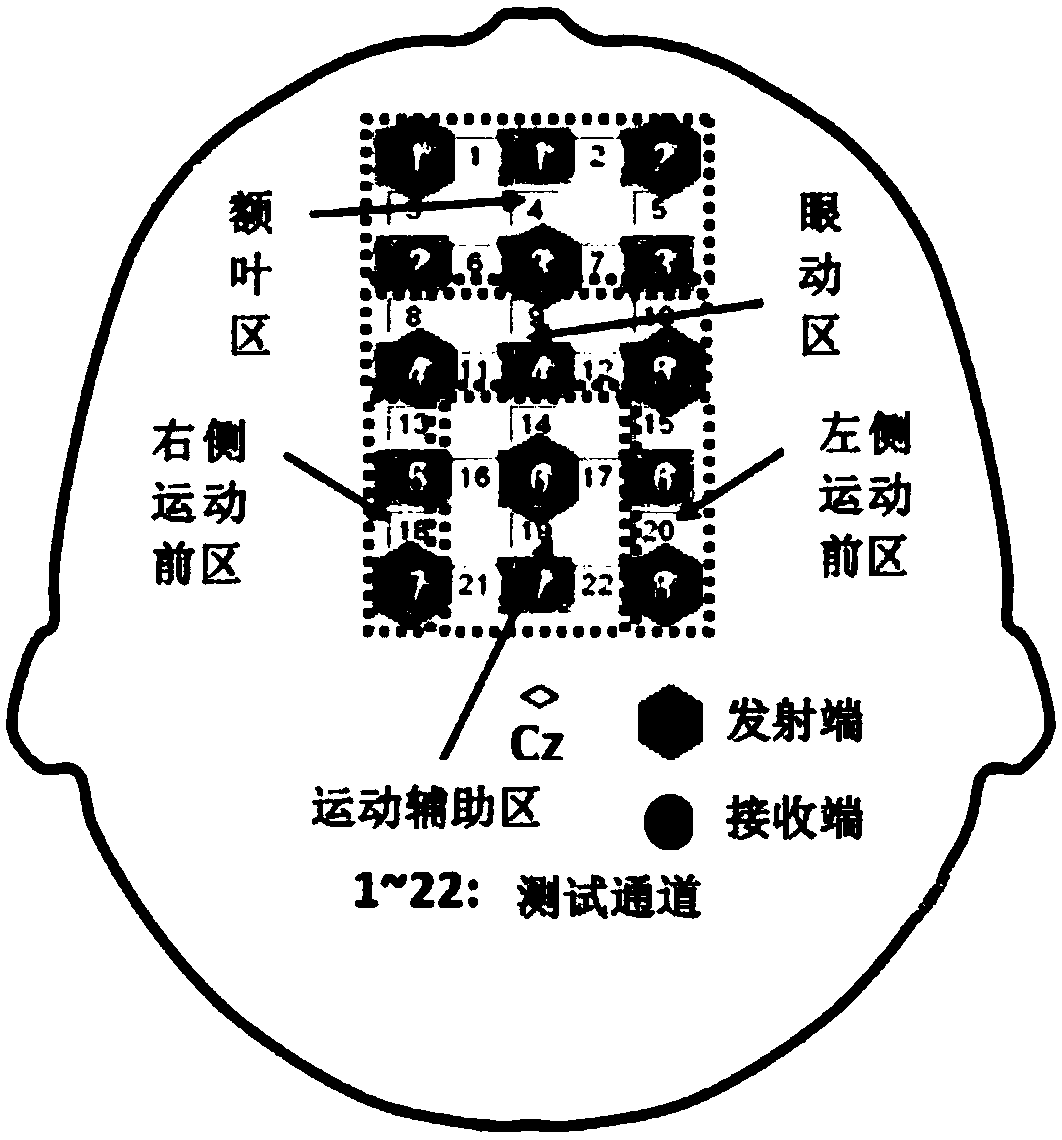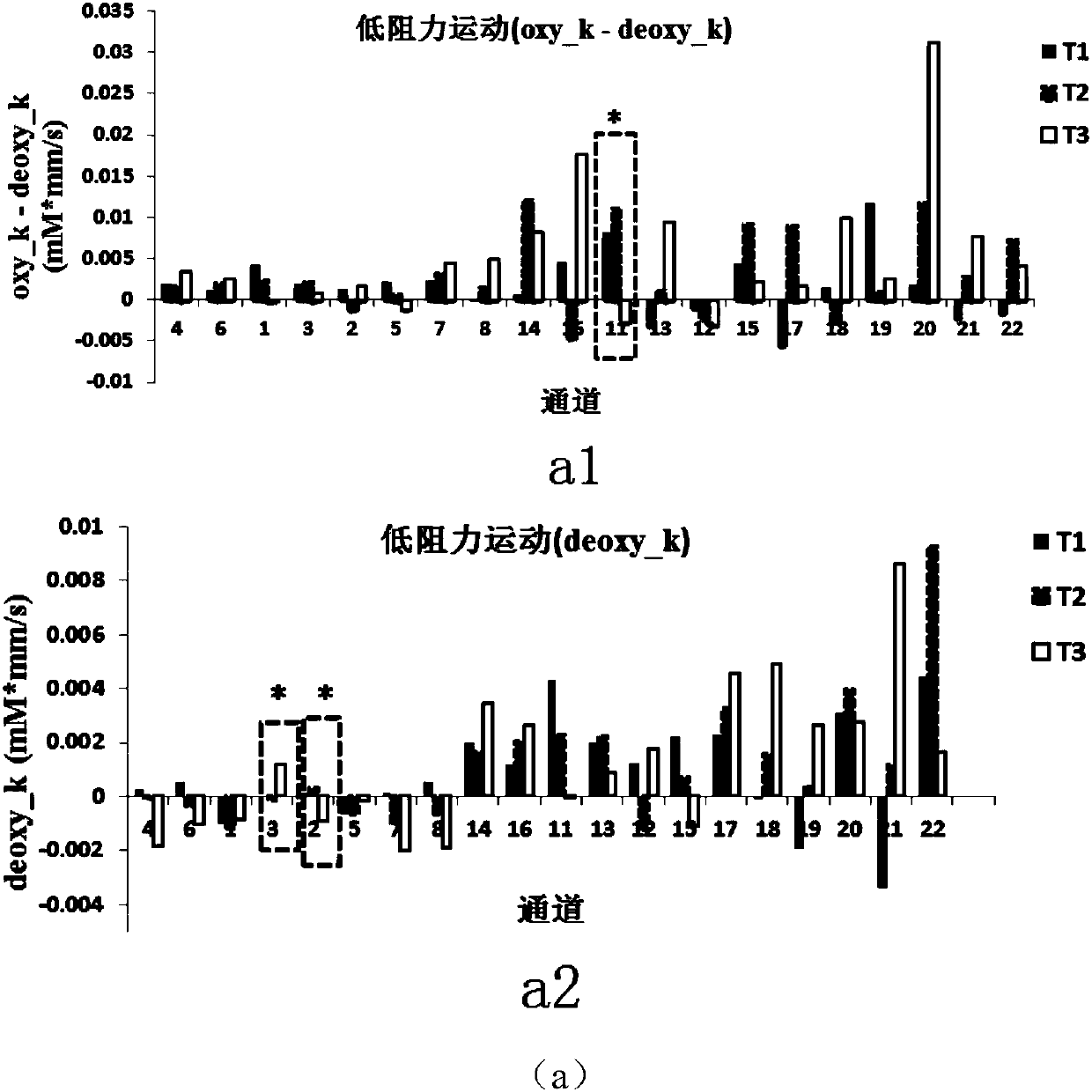Recognition method for resistance states of lower-extremity motion on the basis of cerebral hemoglobin information
A technology of hemoglobin and identification method, applied in the field of identification of lower limb movement speed state, can solve the problems of simple and limited movements, lack of naturalness and flexibility, and poor practicability, and achieve the effect of improving intelligence
- Summary
- Abstract
- Description
- Claims
- Application Information
AI Technical Summary
Problems solved by technology
Method used
Image
Examples
Embodiment
[0038] 1. Experimental design: The experimenter autonomously performs cycling in different resistance states (there are three resistance states in this example, low resistance: 0N, medium resistance: 30N, and high resistance: 50N) in a natural state. . Before the experiment, the whole process and precautions of the experiment should be explained to the subjects. Throughout the experiment, the near-infrared optical brain imaging equipment FORIE-3000 was used to collect the cortical hemoglobin information of the subjects, and the sampling period was set to 0.13 seconds.
[0039] The specific process of the experiment: Before the start of the task, the subjects kept a resting state for about 90-120 seconds, and then started the riding task, in which the task segment and the rest segment were alternated. The order of resistance for cycling is low resistance, medium resistance and high resistance. After completing 3 resistance tasks in sequence, repeat two more times.
[0040]Th...
PUM
 Login to View More
Login to View More Abstract
Description
Claims
Application Information
 Login to View More
Login to View More - Generate Ideas
- Intellectual Property
- Life Sciences
- Materials
- Tech Scout
- Unparalleled Data Quality
- Higher Quality Content
- 60% Fewer Hallucinations
Browse by: Latest US Patents, China's latest patents, Technical Efficacy Thesaurus, Application Domain, Technology Topic, Popular Technical Reports.
© 2025 PatSnap. All rights reserved.Legal|Privacy policy|Modern Slavery Act Transparency Statement|Sitemap|About US| Contact US: help@patsnap.com



